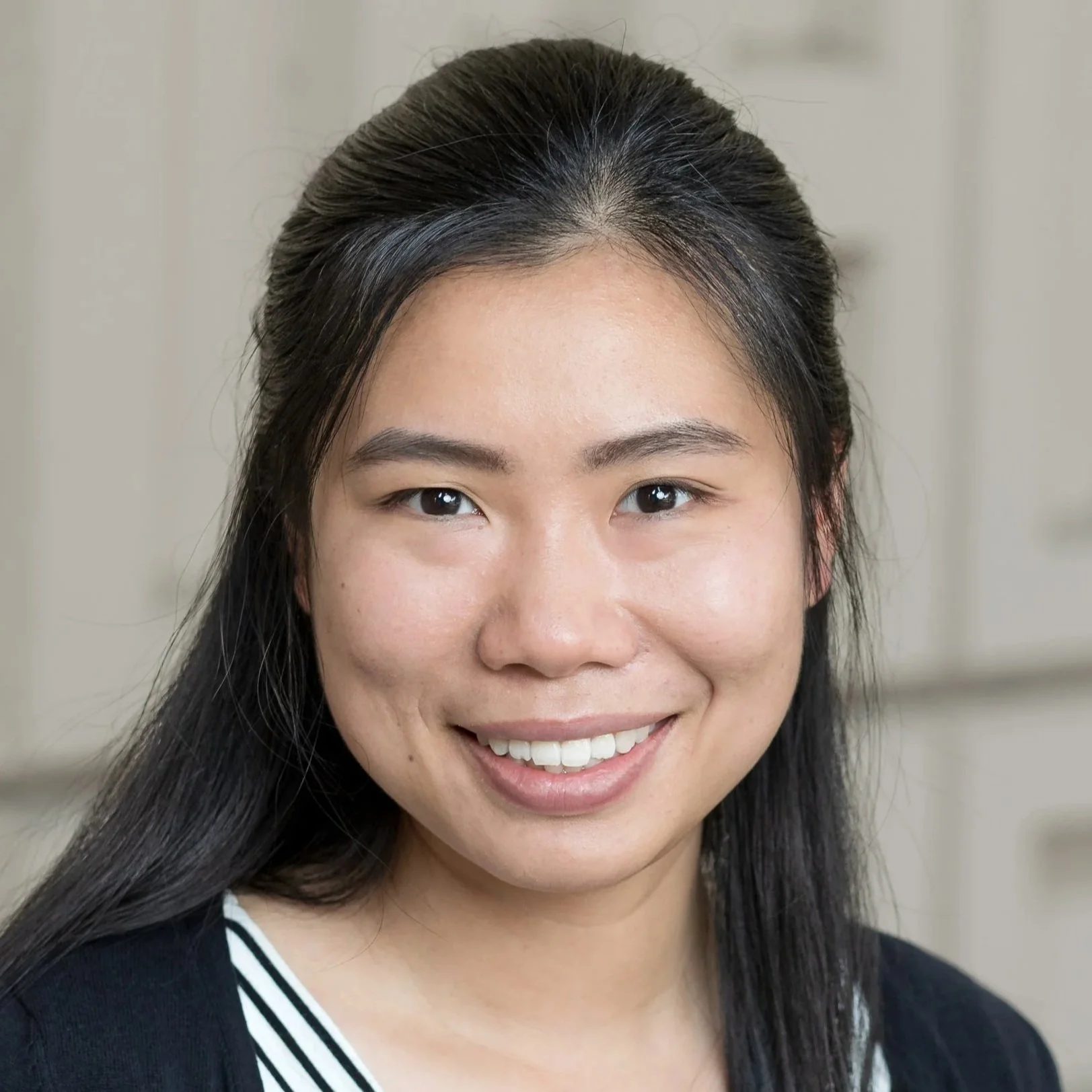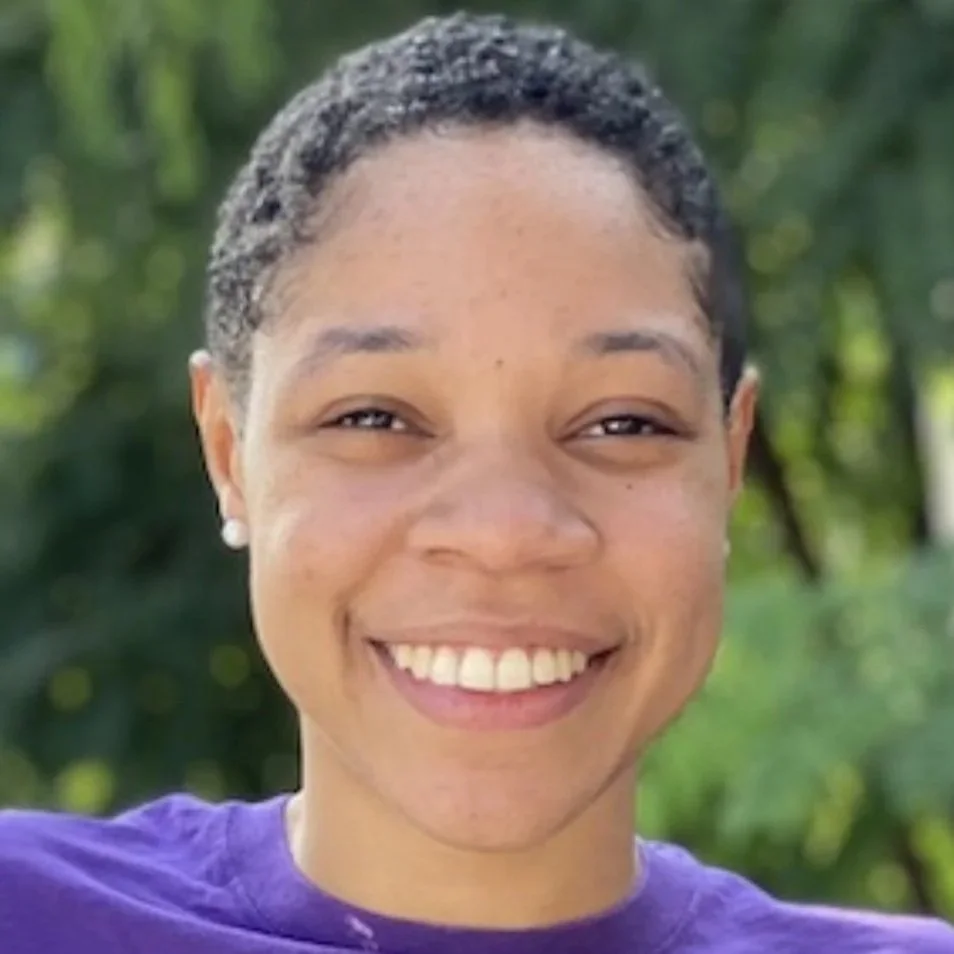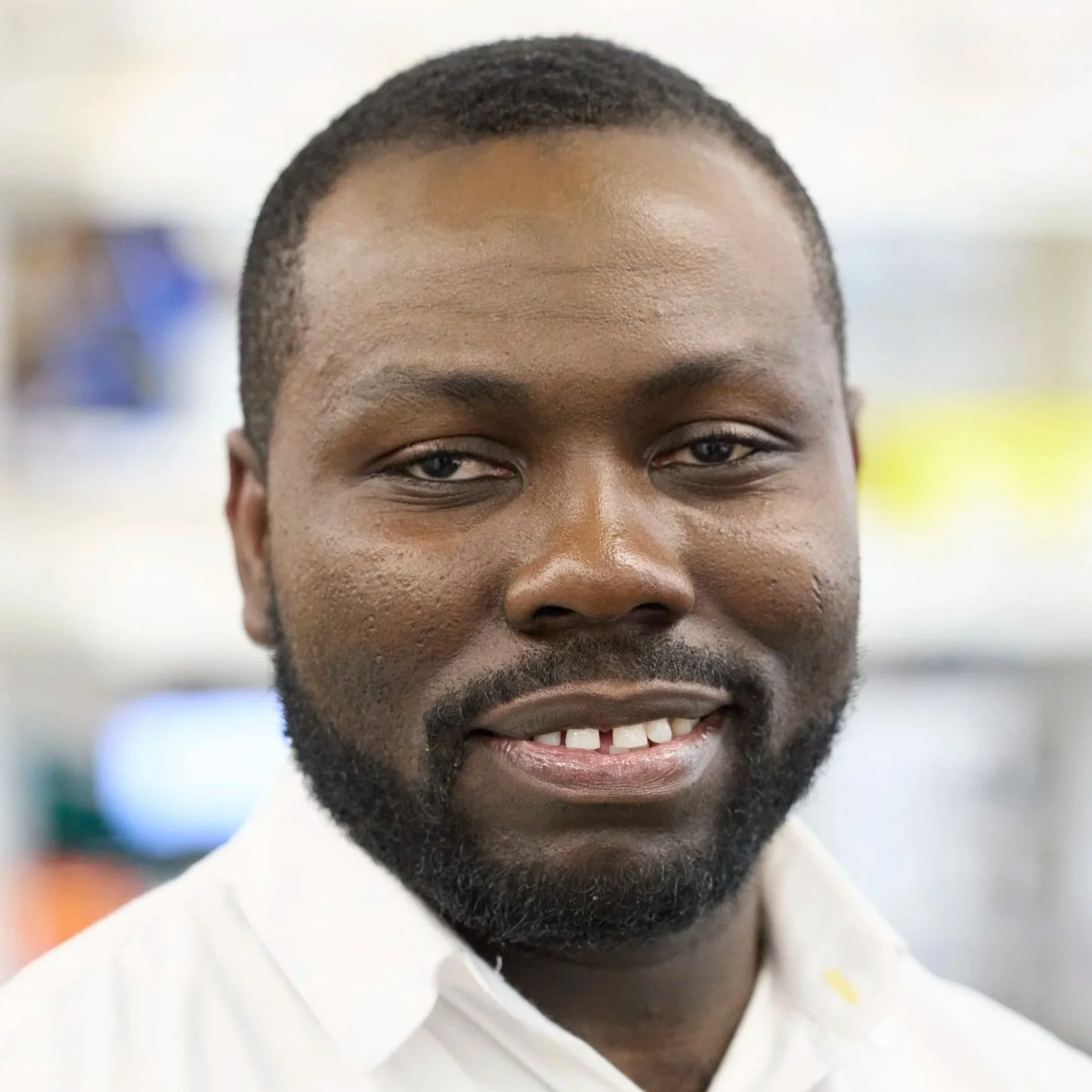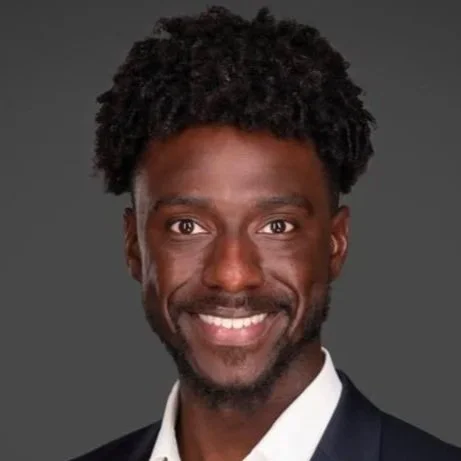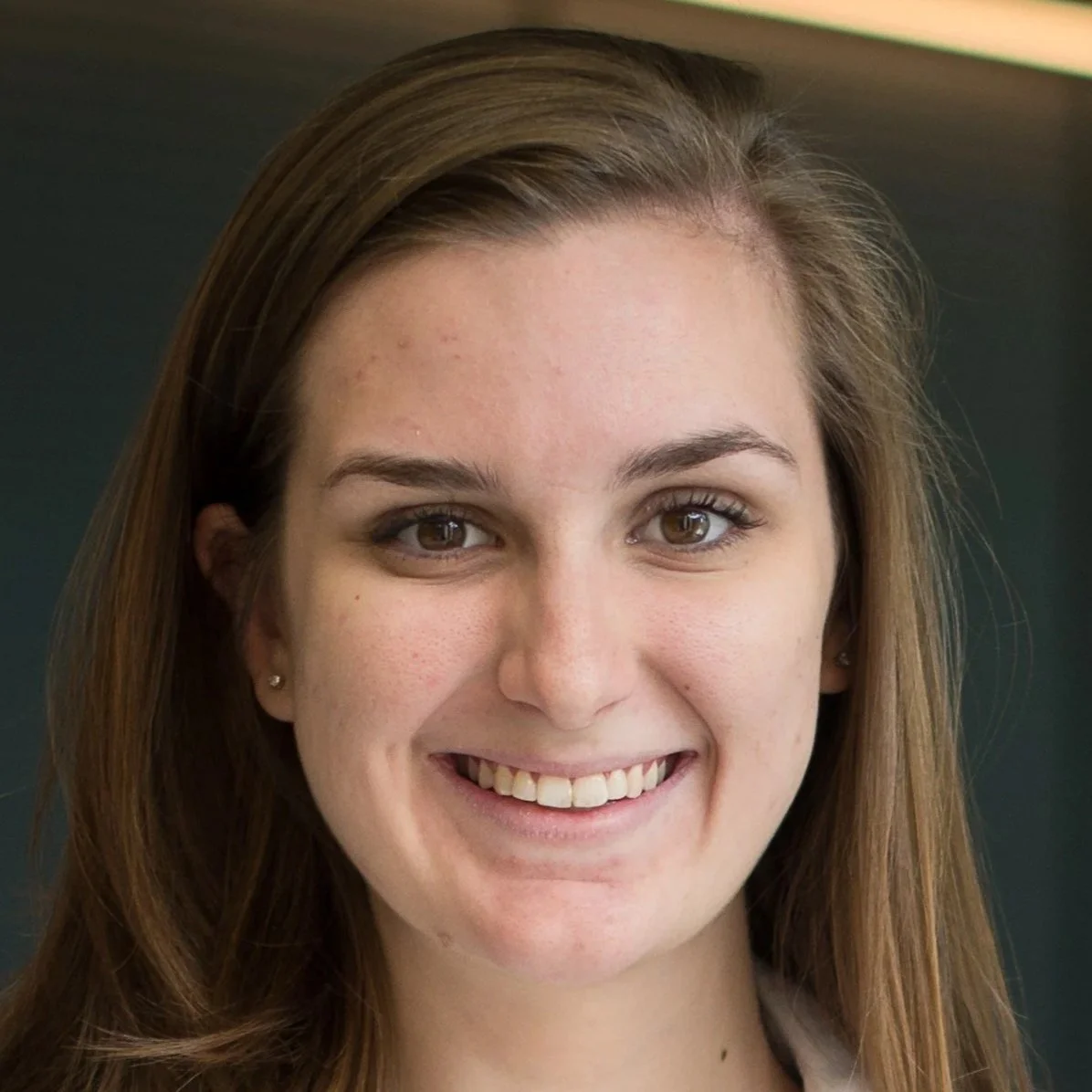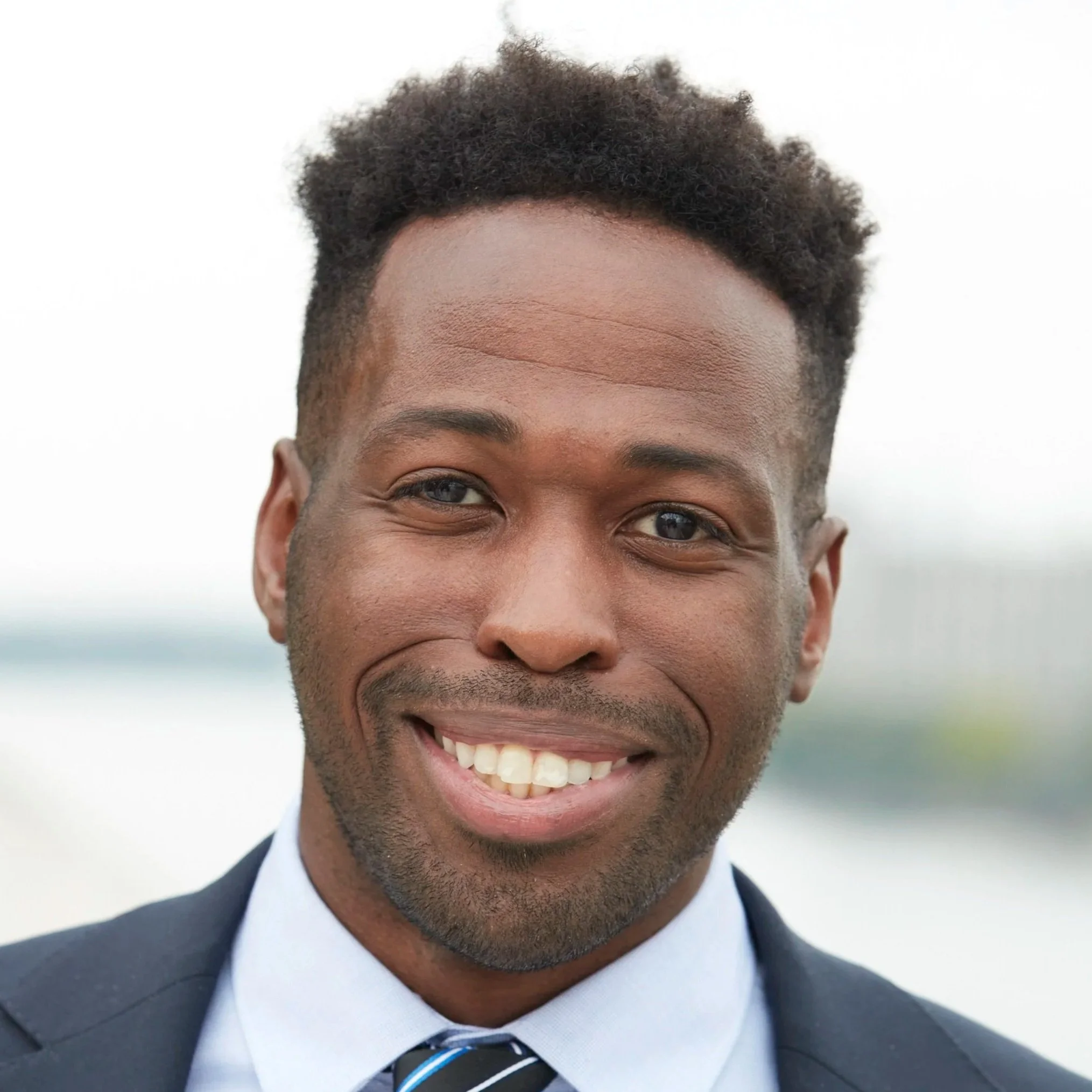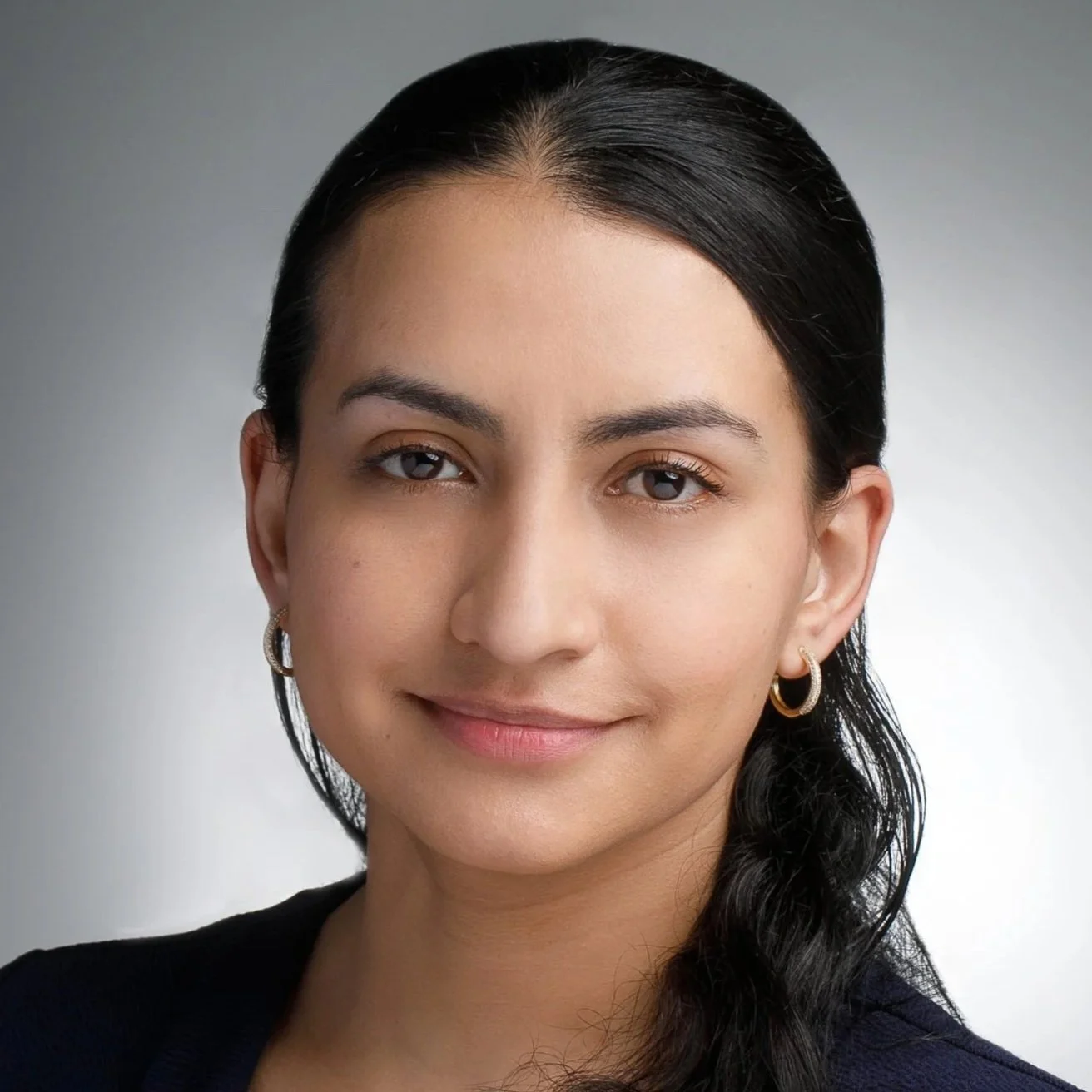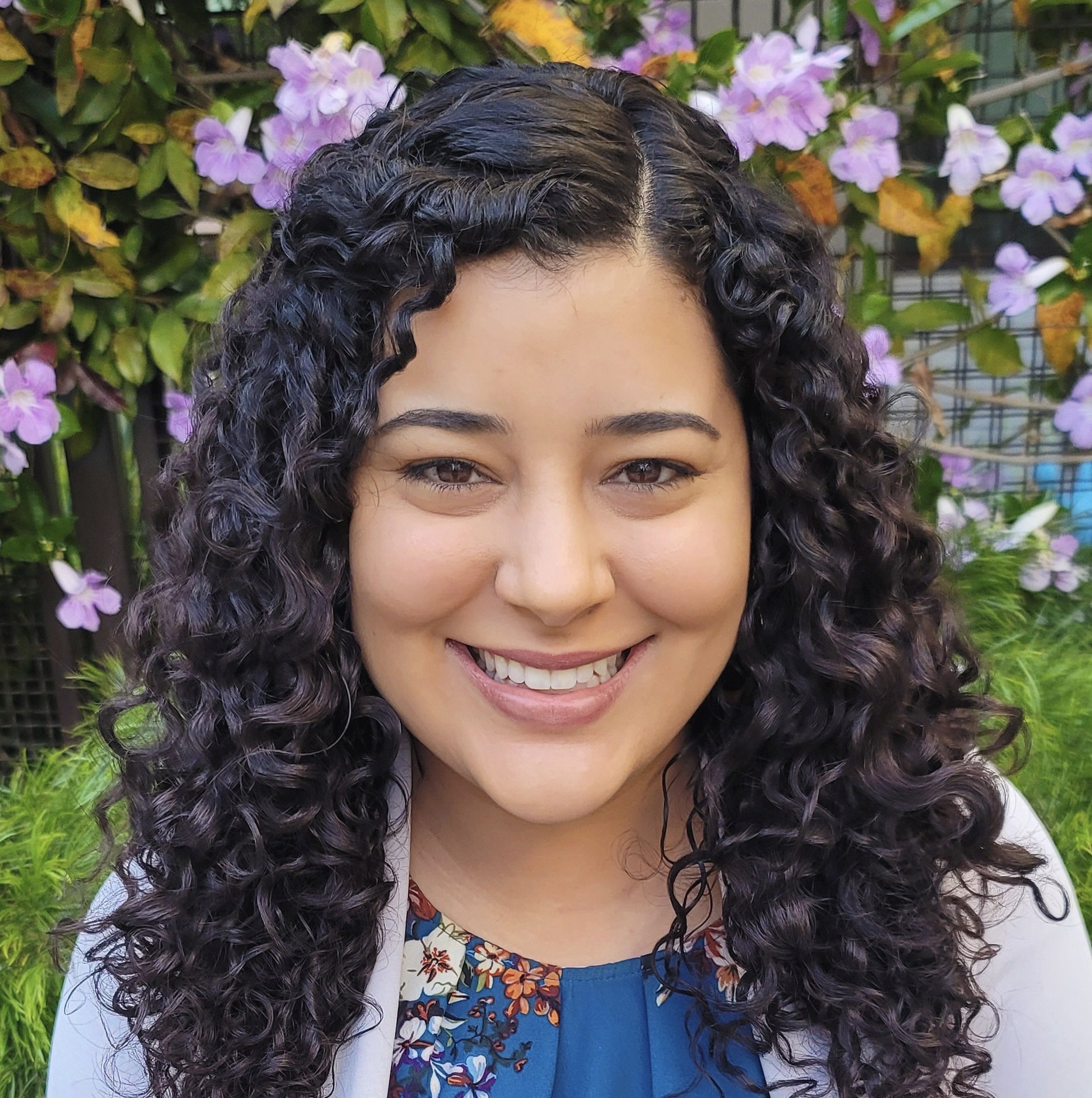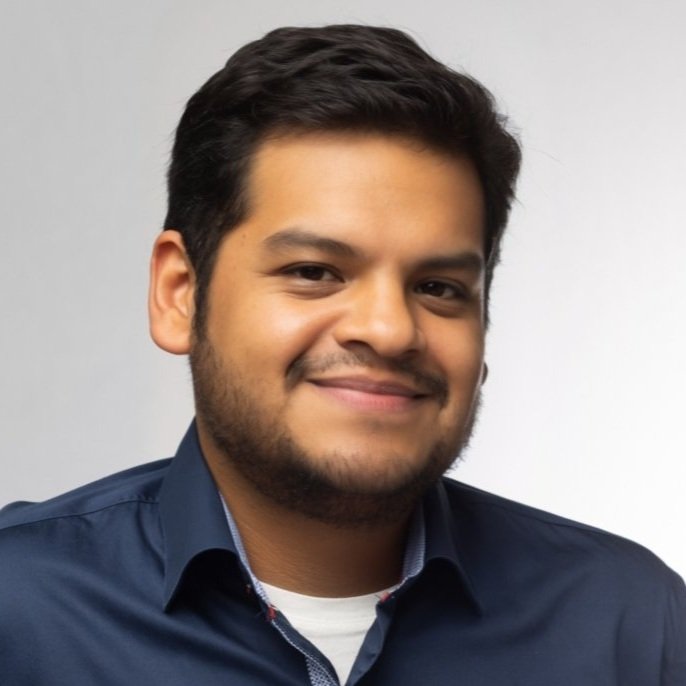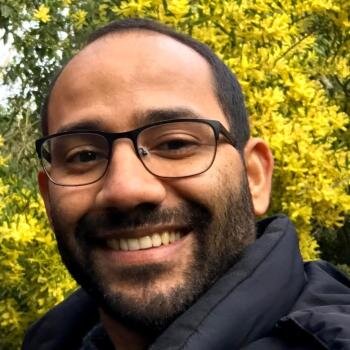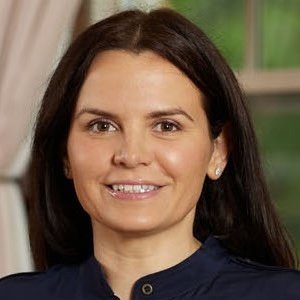Last Update: 10/2025
2025 Alumni
18 Selected Speakers - 1 Faculty Fellow, 2 Instructors and 15 Postdocs
2025 Session 1: Deciphering How Sequence Encodes Transcription
Joan Pulupa, PhD
is a Postdoctoral Research Fellow at Columbia University.
jp4152@columbia.edu
2025 NextGen Recorded Talk
Biography: Joan Pulupa fell in love with microscopy and the nucleus as an undergraduate. She pursued her Ph.D. at Rockefeller University with Dr. Sanford M. Simon. At Rockefeller, she developed techniques to monitor protein dynamics in living cells using polarized light microscopy. Now at Columbia University, Dr. Pulupa is using live-cell microscopy to study gene regulation and genome organization in olfactory neurons.
Visualizing genome organization and transcriptional regulation in live olfactory neurons
Abstract: As eukaryotic cells differentiate and specialize, distant transcriptional regulators physically interact with target genes, contributing to the fine tuning of transcriptional regulation. Little is known about the dynamics of nuclear architecture and its temporal relationship with transcription.
My work exploits the most striking example of gene regulation by genome organization: olfactory receptor (OR) choice in olfactory sensory neurons (OSNs). Detection and identification of volatile chemicals by the mammalian olfactory system is built on the “one receptor per neuron” rule, whereby each mature olfactory sensory neuron expresses a single olfactory receptor (OR) from one allele. Transcriptional choice of one out of ~2000 OR alleles is contingent upon orchestrated changes in nuclear architecture. Early in development, multiple ORs are transcribed within the same cell. As cells mature, a hub containing the singular chosen allele and both cis- and trans-enhancers forms under the control of transcription factors, Lhx2 and Ebf, and adaptor protein Ldb1. Meanwhile, all other alleles are silenced and come together to form OR-specific heterochromatic multi-chromosomal condensates.
In order to explore the relationship between chromosome organization and gene regulation, I established a culture system for primary mouse OSNs. I built CRISPR mouse lines where relevant transcription factors were replaced with labeled-fusion-protein equivalents. I also built tools to label endogenous DNA loci and mRNA in living cells using fluorescent probes.
I characterized the biomolecular interactions that allow the hub to recruit and concentrate Lhx2 and Ebf specifically at the genomic locus of the expressed OR. I found that these transcription factors assembled into transcription-competent condensates with solid properties. We found that the condensates did not freely exchange with the nucleoplasm, indicating that recruitment into the hub is not due to liquid-liquid phase separation but rather the formation of a stable complex with minimal protein exchange. The biomolecular condensates we observed may provide a generalizable explanation for how long-range genomic contacts form and are maintained in many cell types.
Sebastian Castillo-Hair, PhD
is a Postdoctoral Research Fellow at the University of Washington.
castillohair@gmail.com
2025 NextGen Recorded Talk
Biography: Dr. Sebastian Castillo-Hair is a Postdoctoral Researcher in Prof. Georg Seelig's group at the University of Washington. In his research, he uses artificial intelligence and high throughput experiments to study gene regulation and design synthetic biological systems with novel capabilities. Sebastian is originally from Peru, where he obtained his BSc in Mechatronics Engineering. He then received his PhD in Bioengineering from Rice University, where he worked in Prof. Jeffrey Tabor's group on bacterial optogenetics and open-source hardware and software for synthetic biology.
Engineering genetic programs that interface with cell types, tissues, and developmental stages via artificial intelligence and synthetic biology
Abstract: Human cells across tissues, developmental stages, and disease conditions adopt distinct intracellular states – epigenomic, transcriptomic, and proteomic profiles – to compartmentalize function in time and space. Engineering molecular devices that sense and interface with cellular states holds transformative potential for biotechnology. Applications include gene therapies that target specific tissues, cell types, and disease states to minimize off-target effects, and genetic programs that manipulate cell fates to guide stem cell differentiation. However, a limited understanding of how fundamental cellular processes, such as gene expression, are regulated across cell states hampers the rational design of such devices. In my talk, I will summarize my research on using artificial intelligence and high throughput experiments to design synthetic genetic programs that interface with human cell types and tissues, and to reverse-engineer how gene expression is regulated during embryonic development.
Isaac López-Moyado, PhD
is a Postdoctoral Research Fellow at La Jolla Institute for Immunology.
ilopezmo@lji.org
2025 NextGen Recorded Talk
Biography: Isaac F. López-Moyado is a molecular and computational biologist interested in cancer epigenetics and gene regulation. He earned his B.Sc. in Genomic Sciences from the National Autonomous University of Mexico, his home country. He then completed his Ph.D. in Bioinformatics and Systems Biology at the University of California San Diego, under the supervision of Prof. Anjana Rao, where he investigated the diverse roles of the TET family of enzymes. Isaac is currently an Instructor at the La Jolla Institute for Immunology in La Jolla, California, where he is studying how dysregulation of DNA methylation contributes to the development of leukemia and the therapeutic potential of targeting epigenetic and chromatin regulators.
The Double-Edged Role of R-loops in Myelodysplastic Syndromes
Abstract: Cancer cells often display aberrant accumulation of RNA-DNA hybrids known as R-loops. R-loops form in healthy cells during many physiological processes, such as transcription and DNA repair, but aberrant accumulation of R-loops, as observed in myelodysplastic syndromes, can be a source of DNA damage and inflammation. Indeed, accumulation of R-loops has been proposed as a unifying mechanism underlying myelodysplastic syndromes and other myeloid malignancies. My recent research has shown that in models of myeloid malignancies driven by TET mutations, cancer cells display R-loop accumulation, and that further exacerbating R-loop accumulation through genetic deletion of R-loop-suppressor RNase H1 increased DNA breaks and impaired cancer cell proliferation. Given these preliminary results, I hypothesize that elevated R-loops are an “Achilles heel” of certain subtypes of myelodysplastic syndromes, and that impairing RNase H1 activity to further increase R-loops and DNA damage in cancer cells could represent a novel therapeutic strategy for treating cancers characterized by elevated levels of R-loops.
2025 Session 2: Genomics and Nucleic Acid Therapies
Noa Katz, PhD
is a Postdoctoral Research Fellow at Stanford University.
katznoa@stanford.edu
2025 NextGen Recorded Talk
Biography: Noa Katz is a Stanford Science Fellow and an EMBO and Fulbright postdoctoral scholar at Stanford University. She earned a doctorate at the Technion, Israel Institute of Technology, and came to Stanford as a postdoctoral scholar in 2021. She pursued research at the intersection of engineering and the life sciences, using biomolecular gene circuits to study and manipulate the nervous system. In 2025 Katz was awarded a joint Synthetic Neuroscience grant, from Stanford's WuTsai Neurosciences Institute, Sarafan Chem-H, and Bio-X.
Biomolecular circuits for precise gene expression
Abstract: One key reason why biological systems are complex lies in the regulation of gene expression across different cell types and contexts. Although nearly all cells share the same DNA, what distinguishes a brain cell from a kidney cell is how DNA is transcribed into RNA and proteins. This regulation is highly specific in space, time, and amount- as seen in localized repair programs triggered immediately after injury- and when it fails, it can lead to disease. To address this, we need tools that can mimic or even surpass the body’s native regulatory mechanisms, especially in systems as intricate as the nervous system. Realizing this challenge, I designed modules for neuronal gene expression in the right place, at the right time, with the right amount.
In the first project (right amount), I implemented an incoherent feedforward loop to reduce gene expression variability against the variability of vector delivery (Katz and An et al., Cell, in revision). The therapeutic goal was treating dosage sensitive brain-development disorders, such as the reciprocal syndromes- SMS and PTLS- caused by having one or three copies of RAI1 gene, respectively. A major challenge in treating SMS is increasing RAI1 expression without overshooting into the three-copy PTLS range in cells that received high viral titers. To address this, I engineered a modular system combining modified CRISPR activation with a protease that cleaves it and inactivates excess over-expression. Guided by computational simulation, I demonstrated dosage control for SMS patient-derived cells and cortical neurons. In my second project (right place), I developed an RNA-sensing technology to target Retinal Ganglion Cells (RGCs), the cells that transmit visual data to the brain. Recent studies have shown that RGCs consist of over 40 distinct neuronal subclasses, each with unique functions. However, most of these have not been studied in animals, largely because targeting individual subclasses remains challenging. To address such cases, I was key in developing RNA-based sensors that can drive the expression of any protein based on the presence of a specific mRNA. I first used this system to activate YFP specifically in RGCs in mice retinas, then refined it to target the W3B subclass by linking expression to a W3B-specific marker. In my third project (right time), I began exploring the use of RNA sensors to track dynamic changes in gene expression. By integrating my earlier modules, I designed a feedback circuit that can potentially detect the decline in endogenous expression and adjust output accordingly.
Jingxun Chen, PhD
is a Postdoctoral Research Fellow at Stanford University.
jchen415@stanford.edu
2025 NextGen Recorded Talk
Biography: Dr. Jingxun Chen is a Jane Coffin Childs postdoctoral fellow and Stanford Katharine McCormick Fellow in the Brunet lab (Genetics) at Stanford University. She previously earned her Ph.D. in Molecular and Cell Biology at UC Berkeley in the Ünal lab, supported by NSF GRFP, and a B.S. in Biology at MIT. She is interested in understanding how sexual reproduction is regulated and impacts physiology and health across scales and time. During her postdoctoral research, she has developed the African killifish as a novel vertebrate model for understanding how sexual interaction influences vertebrate organ aging, employing a combination of multi-omics, molecular genetics, cell biology, and computational approaches.
Sexual interaction impacts organ aging in a short-lived vertebrate
Abstract: Sexual interaction is a prevalent behavior in nature – it is essential for reproduction in many species and a central component of life. Yet, an unanswered question remains: how does sexual interaction–also referred to as mating–shape animal physiology and health across an animal’s lifetime? Unlike other external factors such as diet and exercise, the impact of sexual interaction on aging is far less studied, particularly in vertebrates. Here, we develop the short-lived vertebrate, African turquoise killifish, as a new model to study how sexual interaction affects organ aging. Using a combination of single-cell RNA sequencing, in situ staining, and lipidomics, we find that mating regulates liver aging in a cell-type and sex-specific manner. In old female livers, mating dampens inflammation in hepatocytes, decreases the levels of myeloid cells, and increases specific lipid species. Interestingly, machine-learning models predict that mating leads to ‘younger’ transcriptomic ages in specific liver cell types. More broadly, mating induces anti-inflammatory and metabolic rewiring transcriptomic signatures in the female brain and gut, suggesting mating may affect organ aging more globally. Our work provides the first evidence that mating reshapes the physiological context during aging in a vertebrate. Future studies will interrogate the molecular and cellular mechanisms of the mating effects on organ aging and the impact of mating on disease, with the long-term goal of designing new interventions–based on sexual interaction–to counter aging and age-related diseases.
Brea Manuel, PhD
is a Postdoctoral Research Fellow at the University of Maryland - Baltimore County.
bmanu15@umbc.edu
2025 NextGen Recorded Talk
Biography: Dr. Brea A. Manuel is a postdoctoral scientist under the direction of Professor Michael F. Summers at the University of Maryland, Baltimore County (UMBC), supported by the Howard Hughes Medical Institute. She earned her Ph.D. in Chemistry from Emory University under the direction of Professor Jennifer Heemstra, where her research focused on building nucleic acid-based tools for biological sensing and modulation. She earned her B.S. from Louisiana State University under the direction of Professor Isiah Warner, where she studied the antiviral properties of organic salts. Her current research explores the molecular basis of retroviral genome packaging, focusing on Moloney Murine Leukemia Virus (MoMuLV), with broader implications for understanding and treating retroviral diseases such as HIV.
Elucidating the HTSS-Independent Genome Packaging Pathway of Moloney Murine Leukemia Virus
Abstract: This research seeks to investigate and compare the viral genome packaging mechanisms of HIV-1 and its evolutionarily distant relative, Moloney Murine Leukemia Virus (MoMuLV). While previous research has established that HIV-1 utilizes a heterogeneous transcription start site (HTSS) to regulate its genome through dimerization-dependent mechanisms, less is known about how retroviruses like MoMuLV, which lacks an HTSS, manage genomic processes. The primary objective of this study is to elucidate the dimerization behavior of MoMuLV genomic RNA (gRNA) in vitro and to examine the influence of RNA structure on genome packaging within host cells. This project will build on these insights to explore the unique mechanisms by which MoMuLV manages gRNA versus mRNA functions in the absence of an HTSS, thereby enhancing our understanding of evolutionary adaptations in retroviruses.
2025 Session 3: Immunology and Cell-Cell Interactions
Saria McKeithen-Mead, PhD
is a Postdoctoral Research Fellow at Stanford University.
sariam@stanford.edu
Biography: Saria McKeithen-Mead, Ph.D. is an HHMI Hanna H. Gray Postdoctoral Fellow at Stanford University, jointly appointed in the Huang Lab (Bioengineering) and the Sonnenburg Lab (Microbiology & Immunology). She is developing systems-level approaches to map when and how mobile genetic elements (MGEs) activate, move between species, and shape microbial community function, integrating computational pipelines with in vivo, ex vivo, and in vitro models. She earned her Ph.D. in Microbiology from MIT, where she studied the molecular mechanisms, regulatory interactions, and fitness tradeoffs underlying horizontal gene transfer by mobile genetic elements.
Watching evolution via gene transfer in the gut microbiome
Abstract: Horizontal gene transfer (HGT) drives microbial evolution, transforming the “tree of life” into a tangled web of genetic exchange. Despite its central role in shaping microbial communities, the ecological and evolutionary drivers of HGT remain poorly understood, as most insights come from clinical contexts centered on antibiotic resistance and pathogenesis.
This work presents a systems-level framework that makes it possible to pinpoint when MGEs activate, how they move between species, and how they evolve within the gut microbiome. Germ-free mice colonized with a defined, co-evolved synthetic community are challenged with an invading microbe, dietary shifts, and antibiotic treatment to reveal conditions that activate mobile genetic elements (MGEs) and the pathways through which they transfer between species. Innovative computational tools integrated with this experimental system map functional MGEs and track their movement across community members. Strikingly, in every mouse on a standard diet, a prophage from the invader independently transfers to a dominant resident species. This transfer is driven by dietary pectin derivatives which act as the ecological trigger for prophage activation. During transfer, the prophage actively evolves through a diversity-generating cassette that remodels lectin-binding domains, highlighting a built-in mechanism that fuels adaptive diversification.
Together, these findings demonstrate how diet can directly drive HGT, prophage activation, and rapid evolutionary change. More broadly, they introduce a framework for dissecting the ecological and evolutionary rules of gene transfer in the gut microbiome with unprecedented resolution.
Juan Inclan Rico, PhD
is a Postdoctoral Research Fellow at the University of Pennsylvania.
jmirico.k16@gmail.com
2025 NextGen Recorded Talk
Biography: My long-term goal is to define how neurons, immune cells, and keratinocytes collectively regulate host-protective skin immunity. My lifelong interest in neuroimmune modulation started after pursuing a doctorate at Rutgers, New Jersey Medical School, mentored by Dr. Mark Siracusa. My graduate studies defined how the neuropeptide Neuromedin B limits cytokine secretion by group 2 innate lymphoid cells to prevent excessive tissue remodeling after helminth-induced lung injury. Thereafter, I continued my postdoctoral training co-mentored by Drs. De’Broski Herbert and Wenqin Luo at UPenn, where we defined how the blood fluke Schistosoma mansoni inactivates itch- and pain-inducing neurons that elicit IL-17-mediated cutaneous anti-helminth immunity. These exciting findings have been honored with the NIH-NIAID K99/R00 Pathway to Independence award and the Life Sciences Research Foundation fellowship, which will support my independent research program to investigate how itch-inducing neurons regulate skin inflammation during infectious and non-infectious conditions.
Listen to your nerves: Itch-Sensing Neurons promote Immunity against Parasitic Worms.
Abstract: Skin employs interdependent cellular networks for barrier integrity and host immunity, but most underlying mechanisms remain obscure. While bacteria and fungi often cause painful and itchy cutaneous reactions, host skin invasion by the human parasitic helminth Schistosoma mansoni frequently goes unnoticed. Our studies interrogated whether sensory neurons that transmit itch and pain contributed to the detection and initiation of skin immunity against S. mansoni. Herein, we demonstrate that S. mansoni exposure inhibited itch evoked by afferents bearing the Mas-related G protein-coupled receptor A3 (MrgprA3) in mice. In vitro approaches revealed that S. mansoni was directly recognized by MrgprA3+ neurons, but this interaction prevented calcium influx and neuropeptide release induced by the MrgprA3 ligand chloroquine. MrgprA3+ neurons promoted IL-17+ T cell expansion and host resistance against S. mansoni through shaping cytokine expression in cutaneous macrophages. Secretions from MrgprA3+ neurons increased chromatin accessibility and expression of inflammatory cytokines in macrophages, partially through the neuropeptide calcitonin gene-related peptide (CGRP). Subsets of MrgprA3+ neurons also express the ion channel Transient Receptor Potential Vanilloid 1 (TRPV1), which broadly defines skin afferents that transmit heat-induced pain. Percutaneous S. mansoni infection significantly reduced thermal pain sensitivity evoked by TRPV1+ neurons and neuropeptide release induced by the TRPV1 agonist capsaicin. Similar to MrgprA3+ neurons, TRPV1+ neurons were both necessary and sufficient to promote host-protective IL-17 responses that limit S. mansoni migration into the pulmonary tract. Taken together, this work suggests that S. mansoni may have evolved to manipulate MrgprA3+ or TRPV1+ neuron activation as a countermeasure to limit IL-17-mediated inflammation, facilitating systemic dissemination and chronic parasitism.
Christian Dzuvor, PhD
is a Postdoctoral Research Fellow at Harvard University.
christian_dzuvor@hsph.harvard.edu
2025 NextGen Recorded Talk
Biography: Dr. Christian Dzuvor is a senior postdoctoral fellow at Harvard T.H. Chan School of Public Health. Prior to this, he earned a BSc. Hons (First Class) in Chemical Engineering from Kwame Nkrumah University of Science and Technology. Afterwards, he obtained his PhD in Biomedical Engineering and Microbiology from Monash University. His work focuses on developing innovative universal vaccines, antibodies and other therapeutics to combat coronaviruses and other emerging pathogens, contributing to pandemic preparedness efforts. His scientific discoveries have resulted in over 20 peer-reviewed publications in transformational journals and 2 patents. He has delivered several invited talks and guest lectures nationally and internationally, received numerous prestigious awards and is currently an editorial board member of Elsevier, Vaccines Journal.
The Missing Link(ers): Nanoparticle Vaccines to Elicit Broad Anti-Coronavirus Antibody Responses
Abstract: Vaccine technologies that cover a range of related pathogens within viral families such as coronaviruses (CoVs), influenza and human immunodeficiency virus (HIV) are the wave of viral vaccine future. Current CoVs and influenza vaccines, along with HIV vaccines in development, primarily induce antibody(Ab) responses to the poorly conserved, hypervariable, and mutation-prone head region, threatening vaccine and therapeutic Abs' efficacy. To address this, CoVs and influenza stem antigens were developed, albeit responses are relatively weak, narrow in specificity, non-neutralizing and lack cross-protection. Multivalent antigen display on nanoparticles (NPs) is an established strategy to enhance and shape immunogenicity. However, one facet of NP vaccines has been mostly overlooked: the indispensable linker segment between the antigen and NP. My talk will introduce unorthodox de novo-designed rigid(L2) and long flexible(L6) linker approaches for optimal display of antigens on NPs. These linker technologies were applied to enhance immunogenicity of prefusion-stabilized Middle East respiratory syndrome coronavirus (MERS-CoV) spike and stem (SS) antigens, targeting occluded epitopes and enhancing cross-reactive antibody responses. By improving CoV-targeting Ab functions, these linker technologies have the potential to confer broad-spectrum CoV protection and represent a promising strategy against hypervariable influenza and HIV viruses.
2025 Session 4: Physical Forces and Mechanobiology
Joshua Francois, PhD
is a Postdoctoral Research Fellow at Harvard University.
joshua_francois@hms.harvard.edu
2025 NextGen Recorded Talk
Biography: Dr. Joshua François is a postdoctoral research fellow in the Department of Systems Biology at Harvard Medical School. His current research uses novel three-dimensional (3D) assays, 3D image analysis techniques, and next-generation sequencing approaches to understand how DNA damage and 3D cell microenvironments affect cell signaling dynamics. His broader research interest is understanding how DNA damage in cancer cells affects two key processes: 1) 3D cancer cell migration in environments with different mechano-biochemical properties, and 2) immune cell homing towards tumors. Dr. François received his Ph.D. in Bioengineering from the University of California San Diego and his B.S. in Mechanical Engineering from the University of Maryland, Baltimore County. He has received numerous fellowships and awards, including the Dean’s Postdoctoral Fellowship at Harvard Medical School, and has a demonstrated and sustained commitment to diversity and inclusion in STEM research.
Quantifying single-cell dynamics and signaling in 3D
Abstract: Understanding cellular responses to external perturbations requires investigating them within three-dimensional (3D) environments, which better reflect physiological conditions. Recent advances in developing 3D tissue models, such as spheroids, organoids, and bioprinted tissues, have enabled studies of complex signaling and cell-cell interactions in health and disease. However, there is still a need for improved experimental and computational tools to follow single-cell signaling dynamics in 3D.
To address this need, I developed a new pipeline for high-resolution imaging and analysis of single cancer cells responding to irradiation in 3D environments. I used an engineered human breast cancer cell line expressing a fluorescent reporter for the cell cycle regulator p21, alongside a nuclear fluorescent marker to enable automated segmentation. I irradiated both individual cells and tumor spheroids derived from this reporter cell line and embedded them between two Matrigel layers to minimize light scattering and optimize imaging. I then used selective plane illumination microscopy to perform high-resolution time-course imaging of cells and spheroids for up to 24 hours post-irradiation. Using 3D image segmentation and analysis tools within this pipeline to quantify p21 dynamics in individually dispersed cells and individual cells within tumor spheroids, I found distinct heterogeneities of p21 signaling in 3D cultures compared to two-dimensional settings.
This novel pipeline has the potential to follow the behavior of cells within a spheroid over time, thereby overcoming the common issue of addressing heterogeneity that arises between spheroids due to variations in size, composition, and other experimental fluctuations. Furthermore, these integrated experimental and computational tools establish a robust platform to study signaling dynamics in healthy and diseased 3D tissue models, and can be extended to assess how multiple cellular processes respond to external perturbations in complex multicellular structures.
Rikki Garner, PhD
is a Postdoctoral Research Fellow at Harvard University.
rikkimgarner@gmail.com
2025 NextGen Recorded Talk
Biography: Dr. Garner is currently a Helen Hay Whitney postdoctoral fellow in the Department of Systems Biology at Harvard Medical School, working with Sean Megason. She previously earned her Ph.D. in Biophysics at Stanford University in the lab of Julie Theriot, supported by NSF GRFP and Stanford Lieberman fellowships, and obtained her B.S. in Physics at the University of Texas at Austin. Dr. Garner has harnessed her unique background in physics and quantitative cell and developmental biology to reveal principles of biological self-organization across diverse contexts including macromolecular transport, cell migration, and tissue patterning.
Tissue fluidity: A double-edged sword for multicellular patterning
Abstract: Tissue fluidity, or the ability of cells to freely move, flow, and rearrange within a tissue, is a universal property of multicellular organisms that plays central roles in development, regeneration, and cancer. In the context of embryogenesis, several tissues have been observed to undergo transitions in fluidity between a liquid-like, migratory state and a solid-like, jammed state, and these transitions drive crucial morphogenetic events such as gastrulation. While it is clear that tissue fluidity is a tightly regulated property that varies drastically across tissues, developmental time, and species, we fundamentally lack an understanding of (1) how fluidity is controlled, and (2) how tissue fluidity impacts critical developmental patterning mechanisms such as morphogen signaling and cell sorting.
Addressing these questions through a tight integration of biophysical modeling and 3D tissue culture experiments, I showed that tissue fluidity is a double-edged sword for multicellular patterning: On one hand, fluidity acts to mix cells and scramble tissue patterns. At the same time, tissue fluidity can also be a powerful catalyst of patterning – for example, in the case of adhesion-based cell sorting. In fact, I show that tissue fluidity can easily be tuned to either freeze, catalyze, or erase tissue patterns, depending on the context. Overall, my work suggests that tissue fluidity is a key regulator of multicellular organization and must be tightly controlled to achieve robust patterning.
I am now actively investigating the consequences of these ideas for early embryonic development and disease. Towards this end, I have developed an in toto imaging pipeline to simultaneously track cell motility and morphogen signaling embryo-wide at single cell resolution over many hours. Using this approach, I have identified a fluidity transition in the early zebrafish embryo in which initially stationary cells suddenly undergo rapid, random migration and scatter globally across the embryo. Similar early-embryonic movements have been reported in chick, mouse, and human. Strikingly, this scattering occurs concurrently with the establishment of the major developmental axes, raising a fundamental question: How can patterning be robust in the context of such extreme random cell movements? Using quantitative imaging, machine learning, and perturbations to both motility and signaling, I am investigating the mechanisms by which morphogen signaling and tissue fluidity interplay to pattern the embryo.
Piere Rodriguez Aliaga, PhD
is a Postdoctoral Research Fellow at Stanford University.
piererod@stanford.edu
2025 NextGen Recorded Talk
Biography: He studied Biology at Cayetano Heredia University in Lima (Peru), then obtained a PhD in Biophysics at UC Berkeley in the Bustamante Lab, specializing in molecular motors and single-molecule methods. Currently, he is a postdoc in Stanford in the Frydman Lab, and a fellow of the Hereditary Disease Foundation. By bridging biophysical measurements at the single molecule level with their effect in neurons and brains, he has established how patient derived disease-causing mutations: i) render the Huntingtin protein toxic to drive Huntington’s disease, and ii) disrupt the operation of TRiC chaperonin, leading to a new spectrum of brain disorders called “TRiCopathies". These two projects are the basis of this future interdisciplinary work, which aims to dissect the link of protein misfolding and chaperones with neurodegenerative diseases.
Dissecting the link of protein misfolding and chaperones with neurodegenerative diseases: from single molecules to neurons
Abstract: My long-term research aims to dissect how protein misfolding and aggregation lead to the onset of neurodegenerative diseases, and the role of chaperones in these processes. To this end, I have focused my postdoc work in two proteins: TRiC and Huntingtin. TRiC is a chaperonin essential for the folding of 10% of the human proteome and contains a folding chamber where proteins are encapsulated and folded. I identified multiple TRiC mutations in 22 patients with brain disorders of idiopathic nature. I used biochemical and in vivo assays in yeast, zebrafish and nematodes to demonstrate these mutations directly impair TRiC ability to properly fold actin and tubulin, which lead to brain malformations. My work reveals an unexpected central role of protein folding and TRiC in nervous system development and define a new class of brain disorders: “TRiCopathies".
On the other hand, the risk of developing Huntington’s disease (HD) is tightly linked with the length of the polyQ domain within the Huntingtin protein (Htt). I aim to understand how disease-causing mutations that expand its polyQ domain affect Htt structure and render it toxic, leading to the onset HD. Because of Htt remarkable structural heterogeneity and aggregation propensity, its study with ensemble structural methods is technically challenging. To circumvent these technical barriers, I developed a single-molecule assay with optical tweezers to study the conformation of single Htt monomers. This powerful single-molecule approach, together with biochemical and neuronal assays, has revealed novel aspects of Htt conformation not reported before and the elusive mechanism by which polyQ length dictates Htt conformation and toxicity. My work paves the way to the design of new therapeutic targets that stabilize the non-pathogenic Htt conformation and therefore inhibit Htt aggregation and toxicity.
2025 Session 5: Sensors and Actuators, From Understanding to Design
Eman Akam-Baxter, PhD
is an Instructor at Harvard University & Massachusetts General Hospital.
eakam@mgh.harvard.edu
2025 NextGen Recorded Talk
Biography: Dr. Akam-Baxter is an investigator at the Massachusetts General Hospital Cardiology Division and an Instructor in the department of Medicine at Harvard Medical School. Eman received her PhD in Chemistry from the University of Arizona and completed her postdoctoral training at the Martinos Center for Biomedical Imaging at MGH. Dr. Akam-Baxter’s research focuses on development of imaging tools that can inform on molecular mechanisms of disease. Additionally, Dr. Akam-Baxter is passionate about mentoring, outreach, and the advancement and equal representation of historically marginalized communities in STEM fields. She is the co-founder and director of the Melanated and Dedicated (MaD) Scientists outreach program.
Mapping the biochemical landscape of fibrosis through molecular imaging and chemical biology
Abstract: Fibrotic diseases—chronic conditions characterized by the accumulation of scar tissue—are responsible for roughly one-third of deaths worldwide. Fibrosis is marked by the excessive collagen deposition and stabilization through enzymatic cross-linking. Collagen deposition and cross-linking results in formation of a dense and durable scar that disrupts normal tissue architecture and function. Although fibrosis has long been considered irreversible, certain biological systems—including specific animal models—demonstrate that scar tissue can in fact be resorbed. Yet the biochemical signatures that distinguish reversible from irreversible fibrosis remain poorly defined.
My research aims to uncover the biochemical determinants of fibrosis reversibility using tools at the intersection of chemistry, chemical biology, and molecular imaging. Using synthetic chemistry and chemical biology, we develop targeted imaging probes that bind to collagen cross-links, allowing us to visualize and compare scar architecture across models of reversible and irreversible fibrosis. Our studies reveal that it is not the extent of collagen cross-linking, but rather the type of cross-link formed, that determines whether scar tissue can be reversed. This insight reframes the long-standing understanding of fibrosis stability and opens new paths for investigating the enzymes that regulate scar permanence.
While our primary goal is to uncover the fundamental biology of fibrosis reversibility, the tools we develop also have translational utility. By adapting these probes for clinical imaging platforms such as PET and MRI, we can non-invasively assess fibrotic activity and biochemical remodeling in vivo. These technologies may eventually support patient stratification and treatment monitoring in clinical trials, offering a secondary application of our imaging strategies. Ultimately, our work uses chemistry and imaging to illuminate the rules that govern tissue regeneration versus permanent scarring.
Maia Kinnebrew, PhD
is a Distinguished Fellow at Stanford University.
mkinnebr@stanford.edu
2025 NextGen Recorded Talk
Biography: My passion for studying lipids stems from my undergraduate training with Dr. Songi Han at UC Santa Barbara; in her lab I investigated the transmembrane protein proteorhodopsin as a model system for studying how a protein’s local environment can tune its function. Excited to pursue these questions further, for my Ph.D. I trained with Dr. Raj Rohatgi at Stanford University where I investigated the receptor-mediated steps of the Hedgehog signaling pathway. My work helped to solve a long-standing mystery in developmental signaling by showing how cholesterol, an abundant cellular lipid, can act as an instructive signal to drive receptor signaling. I am currently a Fellow running an independent research lab in the Biochemistry Department at Stanford. We are investigating the proteins and pathways that maintain cholesterol organization inside cells and animals; our work has implications for metabolic syndromes, immune signaling and cancer.
Determining how lipids are organized to regulate cell signaling
Abstract: Lipids are structurally diverse and spatially organized in cells– they define organelle identity and modulate organelle function. Contrary to the view that their sole function is to support membrane structure, lipids are signaling molecules that control the activity of proteins. Lipid disorganization results in altered protein signaling that leads to human diseases such as metabolic syndromes and neurodegeneration. To understand the critical role that lipids play in organism-level health, my research program seeks to 1) map subcellular and tissue-level lipid organization, 2) identify how proteins organize lipids, and 3) resolve lipid homeostasis when it is lost. A major barrier is the lack of methods to investigate lipids in intact cells; historical methodologies (radiotracing, thin layer chromatography and mass spectroscopy) require lipids to be extracted from cells for analysis. To overcome this barrier, I have developed new strategies to interrogate lipids while keeping cells intact. I am uniquely poised to uncover the mechanisms governing lipid organization in cell signaling due to my background in transmembrane protein purification, structure-function mutational analysis of proteins, cell signaling pathway elucidation, and diverse genetic screening approaches. With funding support from an HHMI Hanna Gray Fellowship and an NIH DP5, my research program aims to shed light on lipids, a critical class of molecules linked to a wide range of human diseases.
Fernando Medina Ferrer, PhD
is a Postdoctoral Research Fellow at the University of California - Berkeley.
medinaferrer@berkeley.edu
2025 NextGen Recorded Talk
Biography: Fernando is a Biochemist with a MS in Biochemistry from the University of Chile, in Santiago, Chile, where he studied the molecular mechanisms of the human HTLV-1 viral pathogenesis. He also graduated with a MS in Geology at the University of Chile, where he developed geochemistry methods applied for mining technologies. Fernando later obtained a PhD in Geobiology from the Department of Earth and Environmental Sciences of the University of Minnesota, Twin Cities. During his PhD, he developed and applied methods for the environmental detection of microbial enzymes, and for the analysis of preserved lipids in the fossil record. Currently, Fernando is a Simons Foundation Postdoctoral Fellow at the Molecular and Cell Biology Department of the University of California, Berkeley, where he studies the genetics and molecular mechanisms of transcriptional regulation in Archaea.
Uncovering the Archaeal Origins of Eukaryotic Transcription Factors
Abstract: Multiple signature features of eukaryotes are now recognized prokaryotic inventions with deep evolutionary roots in the last common ancestor of eukaryotes and archaea. One such innovation is the archaeal transcriptional machinery, a homolog to the RNA polymerase II in eukaryotes. Despite similarities of the archaeal and eukaryotic transcriptional apparatus, all known transcription factors (TFs) that control gene expression (i.e. activator or repressors) in archaea resemble bacterial regulators. Here, I outline the discovery of AmzR (Archaeal Metabolite-sensing Zipper-like Regulators), a uniquely archaeal family of TFs that share structural similarities with eukaryotic—rather than bacterial—TFs. I identified these non-canonical TFs by a forward genetic screen using experimental evolution of the archaeon Methanosarcina acetivorans, and uncovered their function via CRISPR-Cas9 genome editing and global transcriptomics. These in vivo analyses show that a single locus coding for a putative sensory protein (AmzR) controls the expression of genes for methylamine metabolism in M. acetivorans. Despite the absence of putative DNA-binding domains, AmzR and its homologs are able to downregulate methylamine genes by directly binding promoter regions via a cryptic DNA-binding motif. This DNA-binding domain resembles Basic Leucine Zipper (bZIP) eukaryotic TFs, and thus potentially dominates different aspects of archaeal biology by using a regulatory mechanism common to eukaryotic cells. AmzR-type TFs provide a novel avenue to understand archaeal metabolism while embodying living fossils of early eukaryotic transcriptional regulation.
2025 Session 6: Organisms to Networks and Engineering Health
Colwyn Headley, PhD
is an Instructor at Stanford University.
cheadley@Stanford.edu
2025 NextGen Recorded Talk
Biography: Dr. Colwyn “CoCo” Headley is an Instructor in the Division of Cardiovascular Medicine, at Stanford School of Medicine. Dr. Headley earned his B.S. in Microbiology and Ph.D. in Biomedical Sciences (Immunology) from The Ohio State University, followed by a Postdoctoral Fellowship in Cardiovascular Medicine at Stanford University. His research explores the intersection of aging-associated mitochondrial dysfunction and immune regulation, focusing on uncovering novel mechanisms underlying immune-mediated cardiovascular diseases, such as abdominal aortic aneurysms and peripheral artery disease.
Bioengineering Mitochondria for Precision Medicine
Abstract: Mitochondria are central to cellular energy production and survival, and their dysfunction is a hallmark of aging and diseases across cardiovascular, neurological, immune, and musculoskeletal systems. Transplantation of healthy mitochondria has shown promise in restoring bioenergetics, but translation is limited by inefficient uptake and non-specific biodistribution.
I am developing antibody–mitochondria conjugates (“MitoTags”) that tether healthy organelles to defined cellular targets. This strategy enables precise delivery of functional mitochondria to key cell populations profoundly affected by mitochondrial dysfunction in aging and chronic disease.
Proof-of-concept studies show that MitoTags improve mitochondrial uptake, enhance bioenergetics, and reprogram dysfunctional immune cells. This positions mitochondrial transplantation as a programmable, disease-targeted therapy with broad applications from immune aging to cardiovascular injury.
Thomas Pomberger, PhD
is a Postdoctoral Research Fellow at Duke University.
thomas.pomberger@duke.edu
2025 NextGen Recorded Talk
Biography: Thomas Pomberger is a neurobiologist whose research focuses on the neural circuits underlying social-vocal communication. His work bridges species to uncover how cortical regions encode emotional and social meaning in vocal interactions. During his doctoral research, he investigated vocal flexibility and volitional control in marmosets, revealing core principles of primate vocal behavior. As a postdoc in Richard Mooney’s lab at Duke University, he established a novel behavioral assay and used advanced imaging techniques to identify distinct neuronal populations in the mouse insular cortex that encode socially salient vocalizations. His interdisciplinary approach integrates systems neuroscience, behavior, and computational modeling, with the goal of identifying conserved principles of social communication and translating them to our understanding of human social function and dysfunction.
A Cortical Circuit for Communicative Salience
Abstract: Effective vocal communication depends on cortical circuits that highlight socially salient signals. Using a novel behavioral assay with calcium imaging in the posterior insula (pIns) of interacting mice, we found distinct neuronal populations for vocal expression and reception. Expression-related activity rose before vocal onset and persisted in deaf mice, indicating a motor signal, while receptive activity was strongly shaped by social context. Tracing further showed that deep-layer pIns neurons connect the auditory thalamus to a midbrain vocal gating region. These results identify the pIns as a cortical hub for communicative salience.
Brenda Cabrera-Mendoza, MD, PhD
is a Postdoctoral Research Fellow at Yale University.
brenda.cabrera-mendoza@yale.edu
2025 NextGen Recorded Talk
Biography: Dr. Brenda Cabrera-Mendoza is a current postdoctoral associate in the Department of Psychiatry at Yale University. She completed her MD-PhD at the National Autonomous University of Mexico as part of the Plan of Combined Studies in Medicine. Currently, her research is focused on the genomics of suicidal behaviors. She has also investigated the genetic basis of addictions and the influence of social determinants of health on psychiatric disorders.
Genomics of Suicidal Behaviors in Understudied Groups
Abstract: Suicidal behaviors result from the interplay of biological, environmental, and social factors. In this presentation, I will share findings from recent studies that shed light on these different influences. Using brain samples from Latin American individuals, we identified biological changes linked to suicide, including differences between men and women. I will also describe how social determinants of health like socioeconomic status can affect how we understand genetic risk for psychiatric conditions. Together, these studies show the relevance of understudied populations and to look at both biology and social context when trying to understand and prevent suicide.
2025 Next Generation Faculty Symposium Honorable Mentions
Philip Adeniyi - Postdoctoral Research Fellow at Oregon Science and Health University
Maria Bustillo - Postdoctoral Research Fellow at New York University
Ava Carter - Postdoctoral Research Fellow at Harvard University
Jason Casar - Postdoctoral Research Fellow at Stanford University
Christian Cazares - Postdoctoral Research Fellow at the University of California - San Diego
Michael Coulter - Postdoctoral Research Fellow at the University of California - San Francisco
Kelsey DeFrates - Postdoctoral Research Fellow at the University of California - San Francisco
Erin Doherty - Postdoctoral Research Fellow at the University of California - Berkeley
Stanna Dorn - Postdoctoral Research Fellow at the California Institute of Technology
Mohamed El-Brolosy - Postdoctoral Research Fellow at Harvard University & the Whitehead Institute for Biomedical Research
Christian Figueroa-Espada - Postdoctoral Research Fellow at Memorial Sloan Kettering Cancer Center
Catherine Freije - Postdoctoral Research Fellow at Rockefeller University
Nathan Gamarra - Postdoctoral Research Fellow at Stanford University
Anita Gola - Postdoctoral Research Fellow at Rockefeller University
Elizabeth Hart - Postdoctoral Research Fellow at Harvard University
Katie Hatstat - Postdoctoral Research Fellow at the University of California - San Francisco
Last Update:
08/2025
Miriam Hernandez Morales - Associate Specialist at the University of California - Berkeley
Ryan Hulett - Postdoctoral Research Fellow at Carnegie Institution for Science
Kathryn Kapp - Postdoctoral Research Fellow at Stanford University
Elizabeth Kaweesa - Postdoctoral Research Fellow at the University of Illinois - Chicago
Kangjoo Lee - Associate Research Scientist at Yale University
Yuanwei Li - Postdoctoral Research Fellow at Stanford University
Lindsey Lin - Postdoctoral Research Fellow at the University of California - San Francisco
Cody Loy - Graduate Student at the University of California Irvine
Bria Macklin - Postdoctoral Research Fellow at the Gladstone Institutes
Kaia Mattioli - Postdoctoral Research Fellow at Harvard University & Brigham & Women’s Hospital
Reinner Omondi - Postdoctoral Research Fellow at the University of Kansas
Morwan Osman - Postdoctoral Research Fellow at the University of York
Kali Pruss - Postdoctoral Research Fellow at Washington University in St. Louis
Carlos Rivera - Postdoctoral Research Fellow at Harvard University & Massachusetts General Hospital
Julia Rogers - Postdoctoral Research Fellow at Columbia University
Fernando Rossine - Postdoctoral Research Fellow at Harvard University
Samuel Thompson - Postdoctoral Research Fellow at Stanford University
Iris van’t Erve - Postdoctoral Research Fellow at Stanford University
Last Update: 09/2025
Next Generation Faculty Symposium Alumni
Since 2020, the Next Generation Faculty Symposium has featured 39 aspiring faculty talks in a short ten-minute format. Thirty-two of the featured speakers have gone on to obtain faculty positions, as well as many of the honorable mention participants in the program. Alumni of the symposia and updates on their career paths are featured below. Read more about the past symposia and the impact of the program in this Stanford Engineering Science and Technology article.
Last Update: 09/2025
2023 Alumni
14 Selected Speakers - 11 Faculty, 2 Postdocs and 1 in another career opportunity
Kolade Adebowale, PhD
is an Assistant Professor of Bioengineering at the University of California - San Diego.
Ismail Ahmed, PhD
is an Assistant Professor of Neurobiology at the University of Utah.
Meli'sa Crawford, PhD
is an Assistant Professor of Animal Sciences at Rutgers University - New Brunswick.
Selasi Dankwa, PhD
is an Assistant Professor of Microbiology at the University of Massachusetts - Amherst.
Lisa Eshun-Wilson, PhD
is a Scientist II at Profluent Bio.
Shawna Follis, PhD
is an Instructor at Stanford University.
Eva González Diaz, PhD
is an Assistant Professor of Immunology & Immunotherapy at Mount Sinai.
Lauren Hagler, PhD
is an Assistant Professor of Chemistry at Texas A&M University.
Luis Hernandez-Nunez, PhD
is an Assistant Professor of Biology at Stanford University.
Antonio Tinoco Valencia, PhD
is an Assistant Professor of Chemistry & Biochemistry at the University of California - Los Angeles.
Louai Labanieh, PhD
is an Assistant Professor of Immunology and Immunotherapy at Mount Sinai.
Kekoa Taparra, MD, PhD, MPH
is an Assistant Professor of Health Policy & Management and of Oncology at the University of California - Los Angeles.
Claudia Varela, PhD
is a Postdoctoral Research Fellow at Boston University.
Juan Vazquez, PhD
is an Assistant Professor of Biology at the Pennsylvania State University.
Last Update: 04/2025
2021 Alumni
13 Selected Speakers - 10 Faculty and 3 in additional career opportunities
Fayal Abderemane-Ali, PhD
is an Assistant Professor of Physiology at the University of California - Los Angeles.
Basem Al-Shayeb, PhD
is a Co-Founder of Amber Bio.
Joel Babdor, PhD
is an Assistant Professor of Systems Pharmacology and Translational Therapeutics at the University of Pennsylvania.
Mairin Balisi, PhD
is the Augustyn Family Curator at the Raymond Alf Museum of Paleontology.
Arnaldo Carreira-Rosario, PhD
is an Assistant Professor of Biology and of Neurobiology at Duke University.
Valerie Darcey, PhD
is a Stadtman Tenure-Track Investigator in the National Institute of Diabetes and Digestive and Kidney Diseases at the National Institutes of Health.
Maria Maldonado, PhD
is an Assistant Professor of Plant Biology at the University of California - Davis.
Juliane Sempionatto Moreto, PhD
is an Assistant Professor of Electrical and Computer Engineer at Rice University.
Jaimie Marie Stewart, PhD
is an Assistant Professor of Bioengineering at the University of California - Los Angeles.
Maxine Umeh Garcia, PhD
is an Instructor in the School of Medicine at Stanford University.
Natoya Peart, PhD
is an Assistant Professor of Biology at the University of Waterloo.
Claudia Vasquez, PhD
is an Assistant Professor of Biochemistry at the University of Washington.
Yvon Woappi, PhD
is an Assistant Professor of Physiology and Cellular Biophysics at Columbia University.
Last Update: 04/2025
2020 Alumni
12 Selected Speakers - 11 Faculty and 1 in an additional career opportunity
David Cox, MD, PhD
is an Assistant Professor of Genetics at Stanford University.
Kyle Daniels, PhD
is an Assistant Professor of Genetics at Stanford University.
Chantell Evans, PhD
is an Assistant Professor of Cell Biology at Duke University.
Mireille Kamariza, PhD
is an Assistant Professor of Bioengineering at the University of California - Los Angeles.
Geoffrey Lovely, PhD
is a Staff Research Scientist at Pumpkinseed Technologies.
Nicole Martinez, PhD
is an Assistant Professor of Chemical & Systems Biology and of Developmental Biology at Stanford University.
James Nuñez, PhD
is an Assistant Professor of Molecular and Cell Biology at the University of California - Berkeley.
Caroline Palavicino-Maggio, PhD
is an Assistant Professor of Psychiatry at Harvard Medical School and McLean Hospital.
Thomas Stewart, PhD
is an Assistant Professor of Biology at the Pennsylvania State University.
Catherine Tcheandjieu, DVM, PhD
is an Assistant Professor of Epidemiology & Biostatistics at the University of California - San Francisco and an Assistant Investigator at the Gladstone Institute.
Ottman Tertuliano, PhD
is an Assistant Professor of Mechanical Engineering and Applied Mechanics at the University of Pennsylvania.
Hawa Racine Thiam, PhD
is an Assistant Professor of Bioengineering and of Microbiology & Immunology at Stanford University.
Last Update: 09/2025
Honorable Mentions (2020, 2021, 2023)
55 Honorable Mentions (Total) - 35 Faculty, 11 Postdocs and 9 in additional career opportunities
2020
17 Honorable Mentions - 11 Faculty, 2 Postdocs and 4 in additional career opportunities
Eman Akam
Instructor at Harvard Medical School - Massachusetts General HospitalLindsey Backman
Valhalla Fellow at the White Head InstituteR. Konane Bay
Assistant Professor of Chemical and Biological Engineering at the University of Colorado - Boulder
Lab WebpageCheavar Blair
Assistant Professor of Physiology at the University of KentuckyJohn F. Brooks II
Assistant Professor of Molecular Biology at Princeton University
Lab WebpageDavid Castillo-Azofeifa
Principal Scientist at GenentechAhmed El Hady
Group Leader at the Centre for the Advanced Study of Collective Behaviour - Universität Konstanz
Lab WebpageMariana Gomez-Schiavon
Associate Investigator at the International Laboratory for Human Genome Research - Universidad Nacional Autónoma de México
Lab WebpageChristian Guerrero-Juarez
Postdoctoral Research Fellow at the University of California - IrvineColwyn Headley
Instructor at Stanford UniversityRogelio Hernandez-Lopez
Assistant Professor of Bioengineering and of Genetics at Stanford Unviersity
Lab WebpageManuel Razo-Mejia
Postdoctoral Research Fellow at Stanford UniversityFlorentine Rutaganira
Assistant Professor of Biochemistry and of Developmental Biology at Stanford University
Lab WebpageMelody Smith
Assistant Professor of Medicine at Stanford University
Lab WebpageChristina Termini
Assistant Professor of Human Biology and of Translational Science & Therapeutics at the Fred Hutch Cancer Center
Lab WebpageLinda T. Vo
Director of New Opportunities at Curie.BioAsher Williams
Assistant Professor of Chemical Engineering at Columbia University
Lab Webpage
2021
20 Honorable Mentions - 15 Faculty, 1 Postdoc and 4 in additional career opportunities
Hoda Abdel Magid
Assistant Professor of Population and Public Health Sciences and Spatial Sciences at the University of Southern CaliforniaJuan Angueyra
Assistant Professor of Biology at the University of Maryland
Lab WebpageDaniel Bayless
Assistant Professor of Molecular Neurobiology at the Salk Institute
Lab WebpageFatima Enam
Consultant at Boston Consulting GroupDiego Fernandez
Assistant Professor of Opthalmology - Science of Light Center at the Cincinnati Children’s Hospital Medical Center
Lab WebpageLeah Guthrie
Assistant Professor of Bioengineering at the University of California - Berkeley
Lab WebpageShuo Han
Assistant Professor of Biochemistry and of Molecular Genetics & Microbiology at Duke University
Lab WebpageColwyn Headley
Instructor at Stanford UniversityMaia Kinnebrew
Distinguished Fellow of Biochemistry at Stanford University
Lab WebpageHuong Kratochvil
Assistant Professor of Chemistry at the University of North Carolina - Chapel Hill
Lab WebpageShan Meltzer
Assistant Professor of Pharmacology at Vanderbilt University
Lab WebpageRachel Niederer
Assistant Professor of Cellular and Molecular Biology at the University of Michigan
Lab WebpageJasmine Nirody
Assistant Professor of Organismal Biology and Anatomy at the University of Chicago
Lab WebpageAgostina Palmigiano
Lecturer at the Gatsby Computational Neuroscience Unit at University College LondonCandice Price
Program Director at the National Institutes of Health - National Heart, Lunch and Blood InstituteNuttida Rungratsameetaweemana
Assistant Professor of Biomedical Engineering at Columbia University
Lab WebpageShelbi Russell
Assistant Professor of Biomolecular Engineering at University of California - Santa Cruz
Lab WebpageTrevor Sorrells
Assistant Professor of Genetics at Yale University
Lab WebpageJacob Steenwyk
Postdoctoral Research Fellow at University of California - BerkeleyValerie Tornini
Assistant Professor of Integrative Biology and Physiology at the University of California - Los Angeles
Lab Webpage
2023
18 Honorable Mentions - 8 Faculty, 9 Postdocs and 1 in an additional career opportunity
Samira Abdulai-Saiku
Postdoctoral Research Fellow at the University of California - San FranciscoNeville Bethel
Assistant Professor of Chemistry and Biochemistry at the University of California - San Diego
Lab WebpageRashmi Chandra
Postdoctoral Research Fellow at the University of California - San FranciscoJustin Conner
Postdoctoral Research Fellow at the University of California - BerkeleyMaria Fernanda Forni
Postdoctoral Research Fellow at Yale UniversityMelanie Hannebelle
Postdoctoral Research Fellow at Swiss Tropical and Public Health InstituteColwyn Headley
Instructor at Stanford UniversitySergio Hidalgo Sotelo
Assistant Professor of Integrative Physiology and Neuroscience at Washington State University
Lab WebpageRose Hill
Assistant Professor of Chemical Physiology and Biochemistry at Oregon Health and Science University
Lab WebpageChinyere Iweka
Assistant Professor of Pharmacology at Case Western Reserve University
Lab WebpageVineet Joag
Assistant Professor at the Center for Immunity and Immunotherapies at the University of Washington - Seattle Children’s HospitalAhmad Nabhan
Assistant Professor of Molecular and Cell Biology at the University of California - BerkeleyRenato Navarro
Assistant Professor of Material Science and Engineering at the University of FloridaJean Jacques Noubiap
Postdoctoral Research Fellow at the University of California - San FranciscoLenore Pipes
Assistant Professor at the University of Hawaii - Manoa
Lab WebpagePiere Rodriguez-Aliaga
Postdoctoral Research Fellow at Stanford UniversityMarielena Sosa
Assistant Professor of Psychology and Neuroscience at University of Colorado - BoulderJacob Steenwyk
Postdoctoral Research Fellow at University of California - Berkeley




